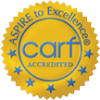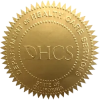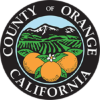Detox is not comfortable. That’s the easy way of saying: it hurts. It’s not fun. There’s no getting around it. It is biology. Once your body has become addicted to drugs or alcohol, when your body stops getting those substances, it is going to cry out (so to speak). But there are ways to mitigate the pain. And make them more of a background to the important personal and psychological work that has to happen when detoxing. One of them is a medicated detox.
Medicated Detox Paving the Way for Recovery
Medication in the realm of drug and alcohol detox isn’t merely about substituting one substance for another; it’s about leveraging our profound understanding of the human brain to ease the journey towards recovery.
Imagine, if you will, a tightrope walker making their way across a wide canyon. Medication-assisted treatment (MAT) doesn’t carry them across—it’s more like a safety net. It helps make sure the falls aren’t fatal.
With that in mind, there is still quite a bit to explore in the realm of medicated detox. So here are some common questions.
1. What exactly is medication-assisted treatment (MAT) in detox?
Think of MAT as the friend who holds your hand through the dark, guiding you towards the light. Scientifically, it involves the use of FDA-approved medications to manage withdrawal symptoms, curb cravings, and restore a degree of normalcy to brain chemistry disrupted by addiction. It’s the first step in a marathon towards recovery, not the sprint to the finish line that many imagine it to be. It helps you focus on the work of recovery rather than the discomfort of detox.
2. Is MAT just swapping one addiction for another?
This is a common misconception. It’s like mistaking a life jacket for the ocean. MAT medications are carefully calibrated to avoid creating a new dependency. They’re used to stabilize brain chemistry, not to perpetuate addiction. It’s a strategic retreat, allowing individuals to step back from the edge of addiction without the free fall of withdrawal symptoms.
3. What medications are used?
For Opioid Addiction:
- Methadone: Picture Methadone as the stabilizing force, a long-acting opioid agonist that tempers opioid withdrawals.
- Buprenorphine: With a profile that makes it less likely to engender dependency, Buprenorphine acts as a partial opioid agonist. It provides enough opioid effect to quell withdrawal and cravings without lighting up the full spectrum of addiction. It’s the subtler approach, often combined with Naloxone to prevent misuse.
- Naltrexone: Naltrexone acts as the gatekeeper, blocking the euphoric and sedative effects of opioids.
For Alcohol Addiction:
- Disulfiram: This medication actually gives unpleasant reactions with alcohol consumption. It’s the deterrent, the constant reminder of the consequences, guiding individuals towards making healthier choices.
- Acamprosate: If recovery from alcoholism is a journey back to balance, Acamprosate is the compass. It helps to restore the brain’s chemical equilibrium disrupted by long-term alcohol use, easing the psychological and physical distress that can linger in abstinence.
- Naltrexone (for Alcohol Too): Just as it does for opioids, Naltrexone serves to dull the effects of alcohol, reducing the pleasure derived from drinking, thereby helping individuals to break the cycle of abuse.
4. How long does someone typically stay on medication?
There’s no one-size-fits-all timeline. The duration of MAT during or after medicated detox is as individual as each person. For some, it’s a matter of weeks; for others, it could be months or even years. The goal is always the same: to find a balance where the individual can lead a life free from the constraints of addiction.

5. Are there side effects to these medications?
Yes. All medications come with their complexities. Side effects can range from mild (think nausea or headaches) to more significant concerns, requiring close monitoring and adjustments to treatment plans. The key is open communication between clients and healthcare providers, ensuring that the path to recovery is as smooth as possible.
6. Can MAT alone cure addiction?
If addiction were a puzzle, MAT would be a crucial piece, but not the only one. Recovery requires a holistic approach that includes therapy, counseling, education, skill building, and support networks. MAT addresses the biological aspect of addiction—a stable foundation upon which to build a new life. But the journey of recovery involves growth, change, and the support of a cast of characters, including medical professionals, family, and friends.
In the grand scheme of things, medicated detox in Orange County is more than just a medical procedure; it’s a testament to the power of combining scientific understanding with a compassionate approach to addiction recovery.
Medicated Detox at Saddleback Recovery
At Saddleback Recovery detox center in Costa Mesa, CA, we understand the courage it takes to step onto the path of recovery. Our medicated detox program is designed to be your guiding light, offering a scientifically backed, compassionate approach to overcoming addiction.
With our dedicated team and personalized treatment plans, we’re here to ensure your journey towards healing is supported every step of the way. Don’t let addiction define your story. Let us help you turn the page towards a brighter, healthier future.








